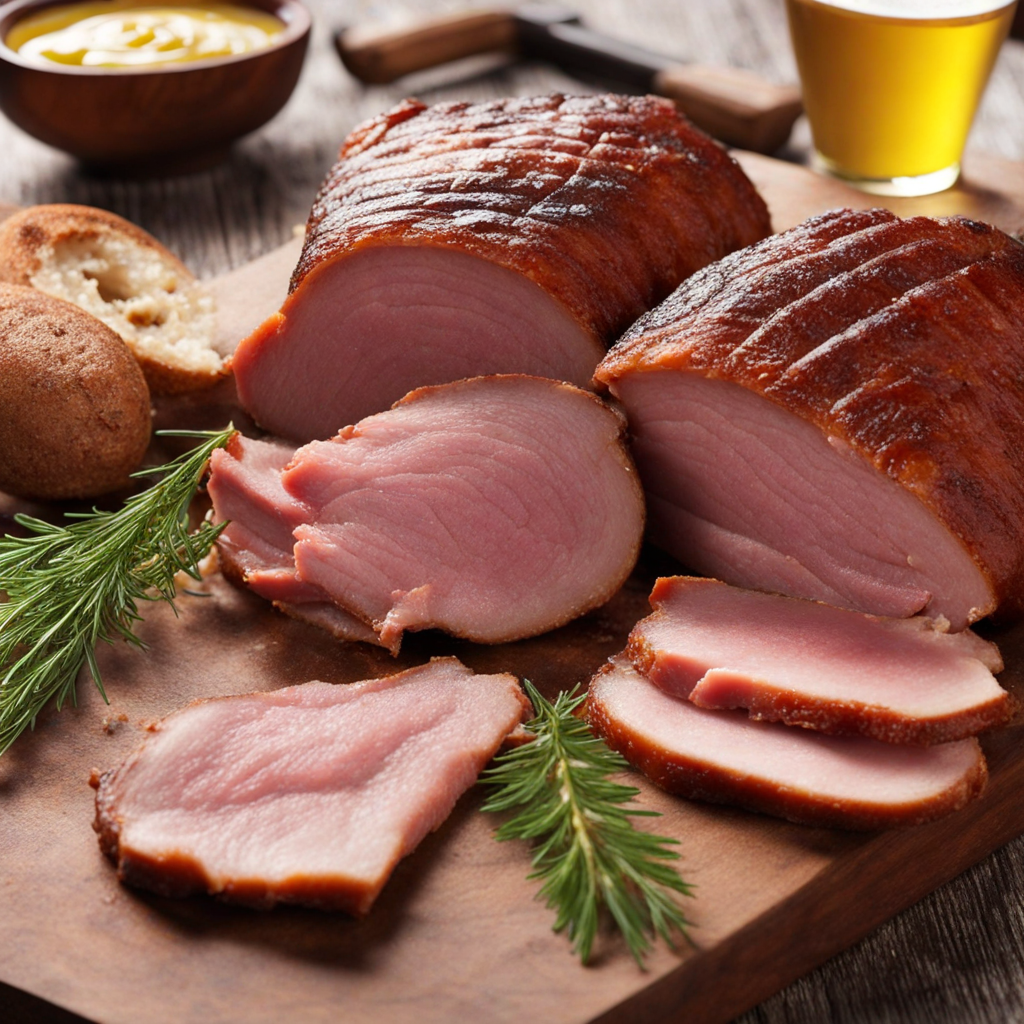Apple Strudel
Apple Strudel is a delightful pastry that captures the essence of Estonian culinary traditions, featuring a thin, flaky dough enveloping a sweet and spiced apple filling. The dough is expertly rolled and stretched to achieve a delicate texture that contrasts beautifully with the rich filling. This pastry is often enriched with a hint of cinnamon, sugar, and sometimes raisins or nuts, creating a balance of flavors that is both comforting and invigorating. The golden-brown crust, once baked, becomes crispy on the outside while maintaining a tender interior, inviting you to take that first bite with anticipation. As you delve into the heart of the strudel, the warm apple filling reveals itself, bursting with natural sweetness and a touch of tartness. The apples, typically sourced from local orchards, are often combined with a sprinkle of lemon juice to enhance their flavor and prevent browning. The addition of spices like cinnamon or nutmeg not only elevates the taste profile but also evokes a sense of warmth and nostalgia, reminiscent of cozy autumn days spent in the company of loved ones. Each forkful is a harmonious blend of textures and tastes, making it a truly satisfying dessert. Apple Strudel is traditionally served warm, often accompanied by a dollop of whipped cream, a scoop of vanilla ice cream, or a dusting of powdered sugar, which adds an extra layer of indulgence. In Estonia, it may be enjoyed during festive occasions or as a comforting treat on chilly evenings. This delightful pastry not only showcases the natural bounty of Estonian apples but also reflects the country’s embrace of classic European baking techniques, making it a must-try for anyone seeking to explore new and exciting flavors.
How It Became This Dish
The History of Õunastruudel: Estonia's Beloved Apple Strudel #### Origins Õunastruudel, or apple strudel, is a cherished pastry in Estonia, reflecting a rich tapestry of culinary history influenced by various cultures and traditions. The roots of this delectable dessert can be traced back to the Austro-Hungarian Empire, particularly the regions that are now part of Austria and Hungary. The word "strudel" itself derives from the German term for "whirlpool," a reference to the swirling layers of dough that encase the filling, akin to the twisting waters of a river. The arrival of apple strudel in Estonia is closely tied to the influence of German settlers who migrated to the Baltic region in the 19th century. These settlers brought with them not only agricultural practices but also culinary traditions, including the preparation of strudel. Apples, a staple fruit in both the German and Estonian diets, became the primary filling, leading to the emergence of Õunastruudel as a distinct regional variant. #### Cultural Significance In Estonia, Õunastruudel transcends mere dessert; it embodies the spirit of community and tradition. It is often prepared for family gatherings, holidays, and celebrations, serving as a symbol of hospitality and warmth. The dish is particularly popular in the fall, coinciding with the apple harvest, when families come together to bake and share. The act of making Õunastruudel is often a communal affair, involving multiple generations, from grandparents teaching their grandchildren the techniques of rolling dough to sharing stories of past harvests. The strudel also holds a place in the culinary identity of Estonia, representing a fusion of local ingredients and external influences. The use of local apples, particularly varieties like 'Aits' and 'Kuldrenett,' showcases Estonia's agricultural heritage. Furthermore, the pastry has adapted to incorporate Estonian flavors, with some variations featuring spices such as cinnamon and cardamom, reflecting tastes that resonate within the broader Baltic culinary landscape. #### Development Over Time As Estonia navigated its historical path through various occupations and influences, Õunastruudel evolved. The early 20th century saw significant changes in Estonian society, including the push for national identity and cultural revival following independence from Russia in 1918. During this time, traditional foods like Õunastruudel became emblematic of a renewed national pride. Cookbooks published during this era often included recipes for Õunastruudel, encouraging families to embrace their culinary heritage. The post-World War II period brought about further changes. Estonia's incorporation into the Soviet Union in 1940 introduced a new array of ingredients and culinary practices, although many traditional recipes, including Õunastruudel, persisted. The pastry's popularity endured, with many households continuing to enjoy it, albeit under the constraints of rationing and limited access to certain ingredients. With the restoration of independence in 1991, Estonia experienced a culinary renaissance. Chefs began to explore and celebrate traditional recipes, including Õunastruudel, not just as nostalgic dishes but as integral components of modern Estonian cuisine. This revival was marked by a focus on local and seasonal ingredients, leading to a renewed appreciation for the simplicity and depth of flavor in traditional pastries. In contemporary Estonia, Õunastruudel remains a beloved treat, often served warm with a dusting of powdered sugar or a scoop of vanilla ice cream. It can be found in bakeries and cafes across the country, as well as at festive occasions ranging from Christmas to Midsummer celebrations. The pastry's adaptability has also led to various iterations, including savory versions filled with cheese or vegetables, showcasing its versatility. #### Modern Interpretations and Global Influence In the age of globalization, Õunastruudel has found its way beyond Estonia's borders, appealing to the international palate. Estonian expatriates often introduce the dish to their new communities, sharing their culinary heritage and contributing to a growing interest in Baltic cuisine. This cross-cultural exchange has inspired innovative adaptations, where chefs experiment with different fillings or fusion approaches, all while respecting the traditional roots of the pastry. Moreover, Õunastruudel is often featured in culinary festivals and competitions, where it stands as a testament to Estonia's rich culinary heritage. Events celebrating Estonian cuisine have gained prominence in recent years, allowing local chefs and home cooks to showcase their interpretations of traditional dishes. The strudel has become emblematic of a broader movement to preserve and promote Estonia's culinary identity, encouraging new generations to explore their culinary heritage. Conclusion Õunastruudel is more than just an apple strudel; it is a reflection of Estonia's cultural evolution, a bridge connecting past and present. From its origins as a simple pastry brought by German settlers to its current status as a beloved symbol of Estonian hospitality, Õunastruudel encapsulates the resilience and adaptability of Estonian culinary traditions. As it continues to evolve and inspire, this pastry remains a delicious reminder of the importance of heritage, community, and the joy of sharing food. Whether enjoyed at family gatherings or in bustling bakeries, Õunastruudel will forever hold a special place in the hearts and kitchens of Estonians.
You may like
Discover local flavors from Estonia







